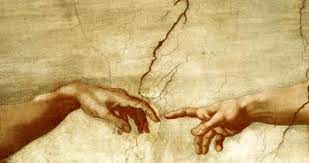
Leonardo Da Vinci is usually thought of primarily as an artist, but he was also an important humanist, scientist, and naturalist in the Renaissance. There is no evidence that Leonardo Da Vinci was an atheist, but he should be a role model for all of us in how to approach scientific and artistic problems from a naturalistic, skeptical perspective. He is also the reason why atheists should pay more attention to the connections between art and philosophy or ideology.
Leonardo believed that a good artist must also be a good scientist in order to best understand and describe nature. The humanistic, natural, and scientific aspects of Leonardo’s life and work are not always clear because he was the original Renaissance man: Leonardo’s art, scientific research, technological inventiveness, and humanistic philosophy were bound together.
Leonardo Da Vinci’s life and work
Leonardo Da Vinci was born in the village of Vinci in Tuscany, Italy on April 15, 1452. His skill and ability to evoke so much emotion with a few simple lines is almost unparalleled in the history of art. Although people may realize that he is an important artist, they do not realize how important he is as an early skeptic, naturalist, materialist and scientist.
As with other Renaissance artists, Leonardo Vinci’s works were primarily religious.
This is only to be expected because the Catholic Church was the largest, wealthiest institution of its age. He commissioned the most northern art and architecture, so any talented artist would work primarily in a religious context. However, not all religious artists convey the same messages, and not all religious art is exclusively religious.


The art of Renaissance artists like Leonardo is not the same as medieval religious art. Leonardo emphasized the humanity of human beings, using Christian figures and mythology to convey secular, humanistic ideas. Christianity cannot be separated from his work, but neither can humanism.
Leonardo Da Vinci’s Science & Naturalism
The origins of science can be traced back millennia, but it can be argued that the origins of modern science are in the Renaissance. Two characteristics of the Renaissance factor in modern science: a rebellion against religious and political restrictions on knowledge and a return to ancient Greek philosophy – which includes empirical, scientific exploration of nature. Renaissance figures such as Leonardo Da Vinci were explicit in their reliance on empiricism rather than faith, a willingness to study nature to gain knowledge rather than relying on tradition or dogma.
Leonardo Da Vinci demonstrated this attitude through careful exploration of the natural world. He didn’t just wonder how birds fly, for example, he undertook systematic studies of birds in flight – and then realized it and tried to apply it in the hope that humans would be able to fly too. Leonardo also studied how the eye sees in order to apply this knowledge to improve his artistic creations.
Driven by the belief that nature always takes the shortest path, he developed the early theorems of inertia, action/reaction, and force. None were as developed as the famous Descartes and Newton, but they show their involvement in science, as well as the degree to which they placed empirical data and science above faith and discovery. This is why Leonardo was such a strong skeptic, casting doubt on the popular pseudosciences of his time, especially astrology.
Leonardo Da Vinci and Renaissance Humanism
As one of the central figures of Renaissance Humanism, the central focus of all Leonardo da Vinci’s art and science was the human being. A focus on human problems rather than otherworldly problems led Renaissance figures such as Leonardo to spend more time on work that would benefit people in their daily lives rather than the extraneous interests of the Church.

The focus of the Renaissance on humanity was the spread of interest in Greek and Roman philosophy, literature and historiography, all of which provided a stark contrast to what was produced under the direction of the Medieval Christian Church. Renaissance Italians felt themselves to be inheritors of Roman culture – a legacy they were determined to study and understand. Naturally, the study led to admiration and imitation.
We have no direct evidence that Leonardo Da Vinci himself was obsessed with or tried to imitate ancient Roman culture, but the key to Renaissance humanism for us today is more its spirit than its content. We have to compare Humanism with medieval piety and scholasticism against which Humanism was considered a breath of fresh air. Renaissance Humanism was a revolt – sometimes explicit, sometimes implicit – against the other-holiness of medieval Christianity. Humanists turned away from a religious preoccupation with personal immorality, focusing instead on how to enjoy, use, and improve this life for the people who live it.
Renaissance humanists did not just write about new ideas, they also lived their ideas.
The medieval ideal was an ascetic monk, but the Renaissance gave us the idea of a Renaissance man: A man who lives in the world and as much as he hears as many people can learn as many different characteristics of the world as possible not only for the sake of esoteric knowledge, but to better improve human life here and now.
The anti-clerical and anti-ecclesiastical leanings of the humanists were a direct consequence of their reading of ancient authors who did not care for gods, did not believe in any gods, or believed in gods that were far and away from anything humanists were familiar with. Renaissance Humanism was a revolution in thought and feeling that left no part of society, not even the highest level of Christianity, untouched.

Leave a comment